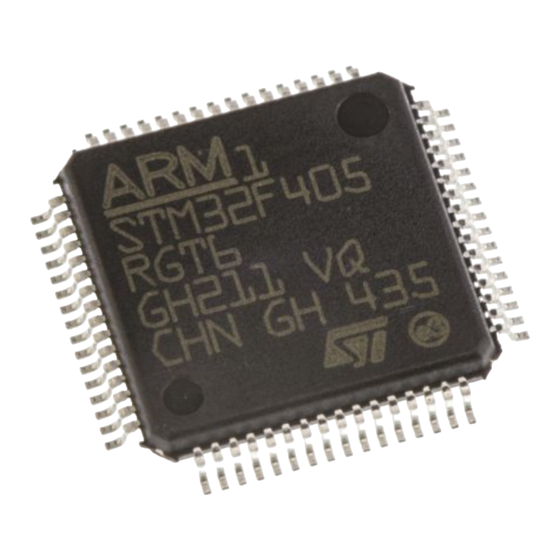Table of Contents
Advertisement
Quick Links
STM32F40xxx, STM32F41xxx, STM32F42xxx, STM32F43xxx
Introduction
This reference manual targets application developers. It provides complete information on
how to use the STM32F405xx/07xx, STM32F415xx/17xx, STM32F42xxx and
STM32F43xxx microcontroller memory and peripherals.
The STM32F405xx/07xx, STM32F415xx/17xx, STM32F42xxx and STM32F43xxx constitute
a family of microcontrollers with different memory sizes, packages and peripherals.
For ordering information, mechanical and electrical device characteristics please refer to the
datasheets.
For information on the ARM Cortex™-M4F core, please refer to the Cortex™-M4F Technical
Reference Manual.
Related documents
Available from STMicroelectronics web site (http://www/st.com):
■
STM32F40x and STM32F41x datasheets
■
STM32F42x and STM32F43x databriefs
■
For information on the ARM Cortex™-M4 core with FPU, refer to the STM32F3xx/F4xxx
Cortex™-M4 programming manual (PM0214).
Table 1.
Microcontrollers
February 2013
Applicable products
Product family
Doc ID 018909 Rev 4
Reference manual
advanced ARM-based 32-bit MCUs
Part numbers and product categories
STM32F405xx, STM32F407xx, STM32F415xx, STM32F417xx,
STM32F427xx, STM32F437xx
RM0090
1/1422
www.st.com
Advertisement
Table of Contents














Need help?
Do you have a question about the STM32F40 Series and is the answer not in the manual?
Questions and answers